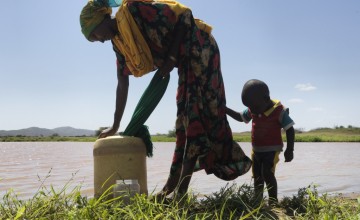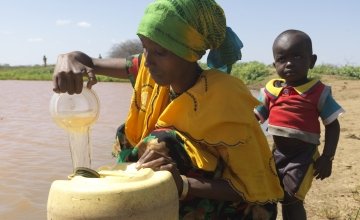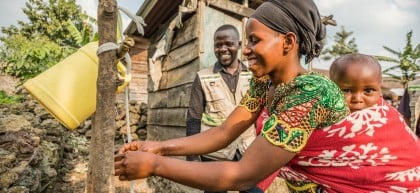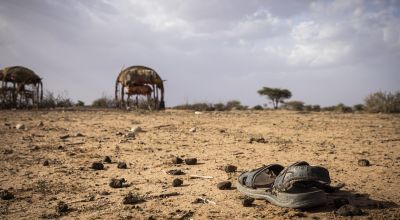
Knowledge Hub
The impossible choice facing millions in Kenya

We’ve all seen the ‘Please wash your hands’ signs in public bathrooms, sometimes they even have fancy soaps and hand creams to indulge in. It’s increasingly rare that’ll you’ll be in a situation where there are no facilities to clean your hands after going to the toilet, even port-a-loos at the muddiest of festivals will usually be fitted with anti-bacterial gel.
However, for many people in sub-Saharan Africa, a shortage of water is a daily occurrence, and even where water does exist, the only way to get it may be from a river, lake or a well. Often, these sources are close to where their animals are roaming and doing their business – so the water is very contaminated.
No other option
Drinking this contaminated water, which contains bacteria from human as well as animal poo, often leads to diarrhoea, meaning that any nutrients eaten are not absorbed by the human body. This of course poses a huge health risk, but if there is no other way to get clean water then people are going to take the risk and drink the river water in the hope that it is not contaminated. In Kenya, over 15 million people collect water contaminated this way – about the same number of people living in Scotland, Wales, Northern Ireland and Yorkshire.
A vicious cycle
Likewise, when going to the toilet, many people in sub-Saharan Africa do not have any soap or water to wash their hands afterward going to the toilet – or just don’t know that they should. Consequently, when feeding a baby, making food or eating it themselves, they end up ingesting the bacteria, which can lead to more diarrhoea, or at the very least a poorly tummy. The more diarrhoea/sickness that people have, the less appetite they have – so they eat less. This means that they lose weight, and their immunity system gets weaker –so that the next time they drink contaminated water, they have a greater chance of getting sick – and the vicious circle continues.
What is worse – people who are sick struggle to work, which means that they cannot earn vital income to be able to buy food for themselves and their families.

The life-saving acronym
I visit many of Concern’s programmes and see that many simple WASH solutions can improve people’s lives. WASH stands for Water, Sanitation and Hygiene.
The “W” can mean drilling a borehole and installing a hand pump that takes water from deep underground so that it cannot be contaminated from animal or human poo; or installing a structure to take and treat water coming from an underground spring. Where something technical like this is not possible, small water purification tablets can treat the water, killing all the bacteria and keeping it clean.
The “S” means making sure that people use a safe, clean latrine to do their business – and supporting people to build their own household latrine. If they do their business in the open, which may be their only choice, their poo could wash into the river or open well, from where they collect their water –contaminating it even more. Likewise, flies that land on their poo may then fly onto their food before they eat it, making them sick.
Finally, the “H” means making sure that hygiene and specifically handwashing practices are correct – making sure that people understand why they should wash their hands, that they actually DO wash their hands, but also that they have the means to be able to do this properly with water and soap. Washing hands properly after going to the toilet cleans the bacteria from hands so that the bacteria do not then transfer to the food that they eat.
It may seem simple to us. You may read this thinking ‘of course, we’ve known these practices since primary school’. But for people without access to education, clean water or sanitation systems, how would they know? We do these things - washing our hands, drinking clean water - every day, without giving them much of a second thought, especially not the thought that they are keeping us alive and healthy. But they are. And this is something we should remember this World Toilet Day. And it is why we are working tirelessly to teach these practices and provide others with clean water so that they don’t have to make the impossible choice: drink dirty water, or no water at all.
John Heelham
WASH Engineering Advisor






